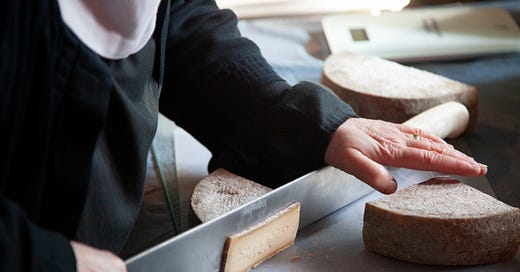This is an ad-free space, and all support comes from you: readers and listeners. Click here to become a paid subscriber.
“Benedict was just a cheese,” Mother Noella Marcellino tells me as we look at Trichothecium roseum, bacteria growing on the rind of one of the cheeses she makes at the Benedictine Abbey of Regina Laudis…
Keep reading with a 7-day free trial
Subscribe to New Worlder to keep reading this post and get 7 days of free access to the full post archives.




